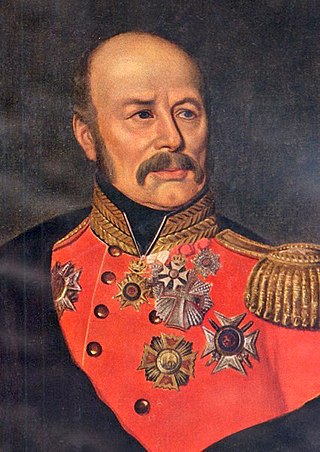
Peter Carl Frederik von Scholten was Governor-General of the Danish West Indies from 1827 to 1848.
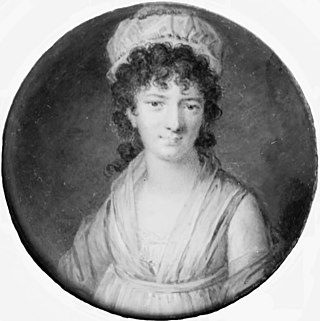
Magdalene Charlotte Hedevig Schimmelmann was a Danish noblewoman and salonist.
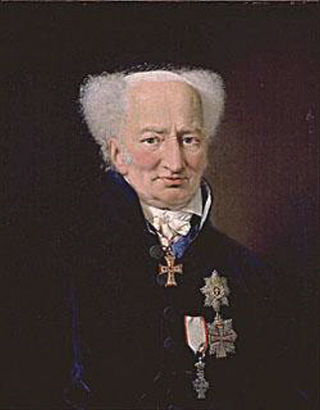
Ernst Heinrich von Schimmelmann was a German-born Danish politician, businessman, nobleman, planter and philanthropist.
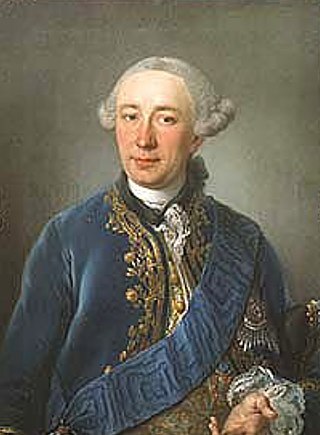
Heinrich Carl von Schimmelmann was a German-born merchant, banker, nobleman, planter and politician. During the Seven Years' War, he speculated heavily on currency debasement in close association with his business partner Abel Seyler. After supporting Denmark–Norway as the head of the banking system in Denmark, he was rewarded by becoming a member of the Danish nobility. Eventually, he became a plantation owner and Danish finance minister. From 1774 onwards, von Schimmelmann was involved in the project of digging the Eider Canal. He died in 1782.

Sophia Magdalena Krag-Juel Vind, née von Gram (1734–1810), was a Danish Salon holder, landowner and noble. She is considered to have exerted considerable political influence in Danish politics during the late 18th century.
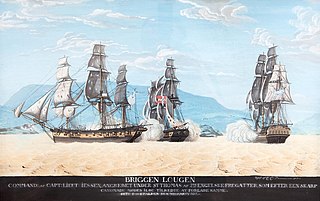
HDMS Lougen was a brig of 18 guns, launched in 1791, and the name-vessel of her class of six brigs designed by the naval architect Ernst Stibolt. She was the first Danish warship to be copper-sheathed. She was active protecting Danish merchant shipping and suppressing pirates in the Mediterranean and in the Caribbean. In March 1801, she fought off the British privateer Experiment and the 22-gun warship HMS Arab in a single action. When the British captured the Danish West Indies in 1801, Lougen was part of the booty. The British later returned her to Denmark where she was broken up in 1802.

The Prince Wilhelm Mansion is a historic property on the corner of Sankt Annæ Plads and Amaliegade in central Copenhagen, Denmark. It is owned by the property investment company Jeudan which is headquartered in the building.

Hans Jonatan was an escaped slave, soldier, farmer and trader. His father may have been a white Dane; his mother was a black slave. Following his participation in the Battle of Copenhagen, after which he was initially given his freedom, he became the subject of a test case in Danish law on slavery. Fleeing to Iceland, he became the first known person of African descent to settle in the country. Later, he became the subject of a DNA study.

Hellebækgård is a Rococo-style mansion in Hellebæk, Helsingør Municipality, North Zealand, located 5 km northwest of Helsingør and some 40 km north of Copenhagen, Denmark. The estate is associated the former 18th-century Kronborg Rifle factory and has also housed the Royal Danish Orphanage. It now houses a private primary school.

Christiansholm is a historic house in Klampenborg, Gentofte Municipality, some 10 km north of central Copenhagen, Denmark. It was built by the merchant Just Fabritius and is now owned by the businessman Fritz Schur.
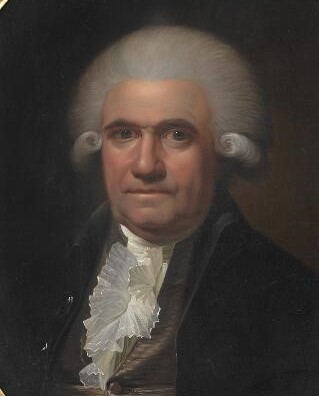
Christopher MacEvoy Sr. was an Irish-born planter, landowner and merchant on St. Croix in the Danish West Indies. One of the largest landowners on the island, he moved to Europe in 1776, sharing his time between Denmark and England. He owned the country house Christiansholm in Klampenborg north of Copenhagen from c. 1777 to 1783. He was the father of Christopher MacEvoy Jr.
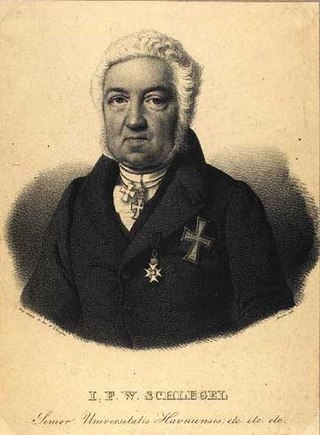
Johan Frederik (Friderich) Wilhelm Schlegel was a Danish jurist. He was an extraordinary professor at the University of Copenhagen from 1789 and ordinary professor from 1800.

Ernst Frederik Walterstorff served as Governor-General of the Danish West Indies from 1788 to 1794 and again from 1802 to 1803. Back in Denmark, he was appointed as a director of the General Post Office and the Royal Danish Theatre. In 1810, he was appointed as Danish envoy in Paris.

Ove Ram[m]el Sehested was a Norwegian-Danish economist, administrator, and a collector of natural history specimens. He served as Minister of the Privy Council of Denmark from 1824 to 1831.

Ulrich Wilhelm de Roepstorff was a Danish colonial administrator and landowner. He served as Governor-General of the Danish West Indies from 1772–73. He owned a couple of ships that sailed in the Danish West Indies Trade as well as a sugar refinery in Odense. In 1810, on the basis of his Funen estates, acquired after his return to Denmark, he was able to establish the County of Roepstorff. He was succeeded as Count of Roepstorff by his nephew Alexander von Petersdorff.
Egebjerggaard, formerly known as Einsidelsborg, is a manor house and estate situated close to Otterup on the northern part of Funen, Denmark. The estate was for almost four hundred years owned by members of the Podebusk (Putbus) family. It was incorporated as an independent manor in 1650. In 1810, it was included in the County of Roepstorff, The Neoclassical main building dates from 1831 and was most likely designed by Jørgen Hansen Koch. It was listed on the Danish registry of protected buildings and places in 1939. The estate covers 1,021 hectares of land.
OlOluf Lundt Bang, also known as Ole Bang, was a Danish lawyer who ended his career as president of Hof- og Stadsretten. During the Struense affair, he served both as prosecutor in the trial against queen Caroline Matilda and as defence attorney in the trial against Enevold Brandt. In 1777, he was ennobled under the name de Bang. He was the father of playwright Baltsasar Bang and landowner Niels Bang.

Ulrich Anton Schønheyder was a Danish naval officer.
















